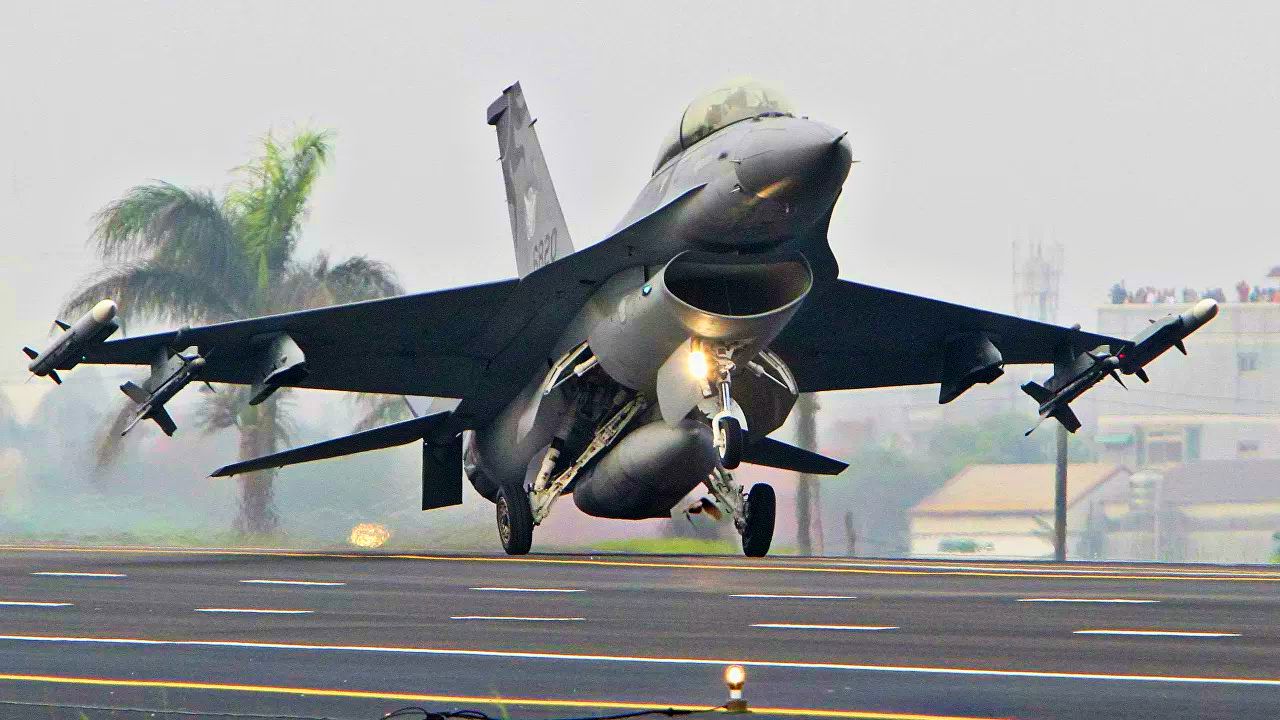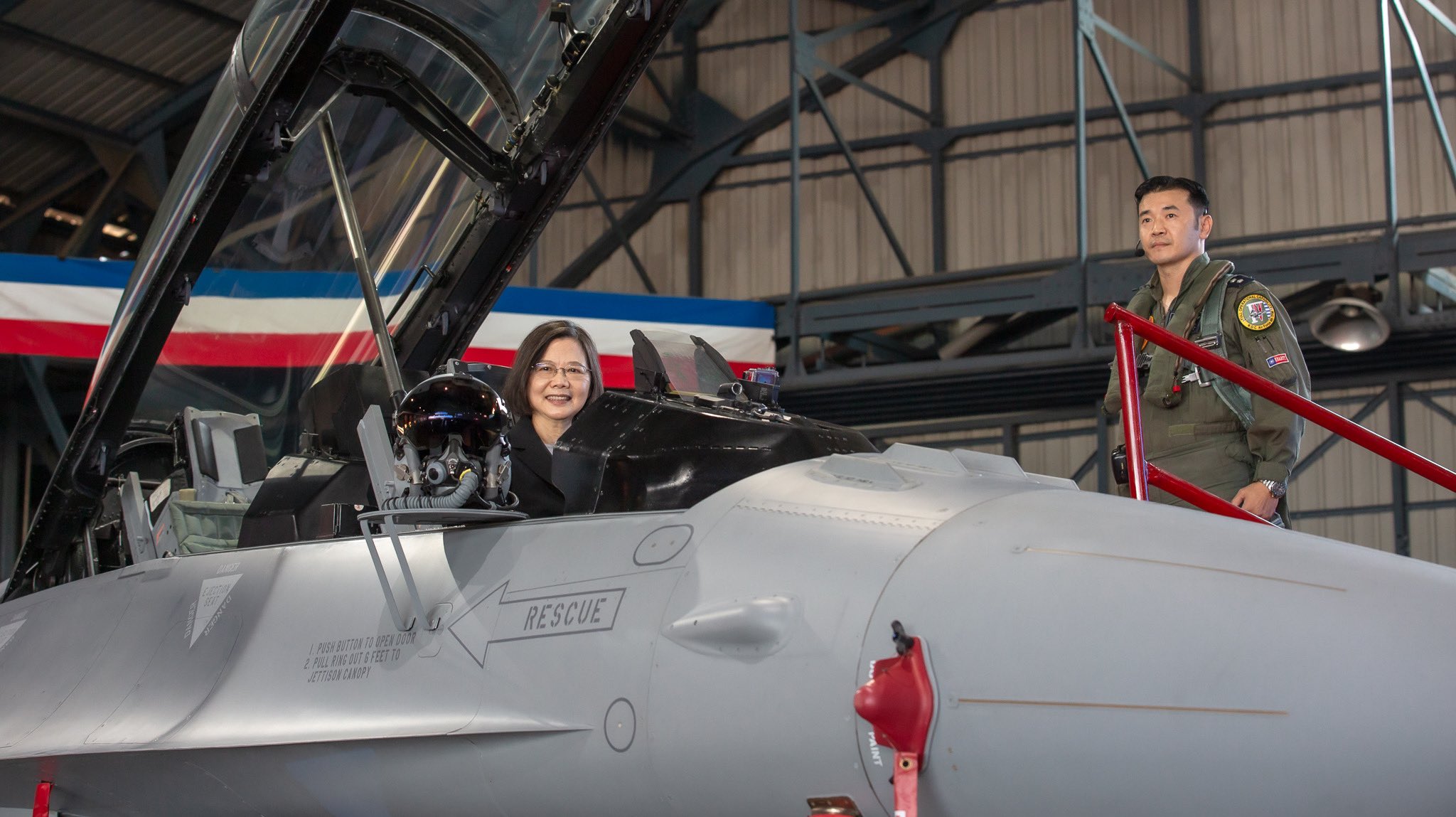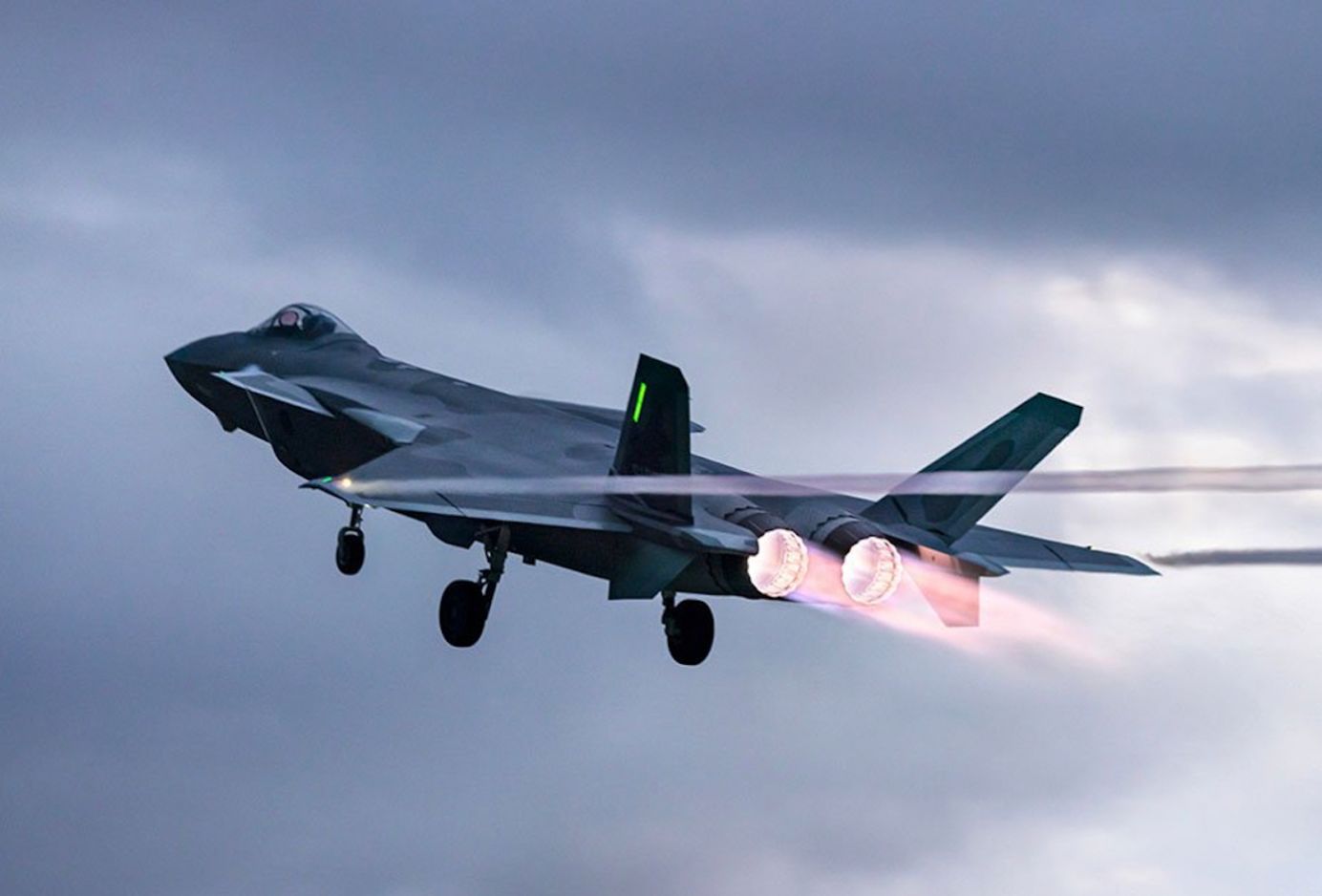With an eye on the Chinese PLA Air Force, the United States (US) has been training its F-16 Viper fighter jets with its stealthy fifth-generation F-35 Lightning II aircraft.
China ‘Races Ahead’ As Global Leader In Hypersonic Missile Program: US, Russia Still Playing Catch Up
As part of the Northern Lightning drills in Wisconsin, stealthy F-35B Joint Strike Fighters from the Marine Corps and F-35As from the active-duty Air Force and Air National Guard have been ‘quarterbacking’ bigger groups of fighter jets to hone combat skills against an imaginary adversary.
In the 2023 edition of these annual drills, the older, non-stealthy F-16 Viper fighters are being covered by the F-35s, allowing them to more effectively engage mock enemy forces, including fighters and cruise missiles, with their heavier missile payload.
Air Force T-38 jet trainers and F-117 Nighthawk stealth jets, and some F-35s, also played aggressors in the drills.
According to the Marines participating in the exercise, this kind of cooperation will be required to prevail in any subsequent high-stakes battles, such as one in the Indo-Pacific against China. This becomes imperative given that military pundits have predicted that a conflict could likely break out between the two states.
A US Marine pilot, Capt. “Melon” Streicher said that fifth and fourth-generation jets working in coordination are a key focus area for the ongoing training.
#Marines with @3rdmaw fly F-35B Lightning II aircraft during Northern Lightning 23 at Volk Field Air National Guard Base, Wisconsin, Aug. 7.
Northern Lightning is one of seven @AirNatlGuard joint accredited exercises.#USMC #JointForce pic.twitter.com/OYz2tPS9KI
— U.S. Marines (@USMC) August 10, 2023
“That’s the crucial part of the integration for specifically… F-35, really,” Streicher said. “We carry four missiles.” This assertion has been made over the years, stressing that while stealthy jets like the F-35s are harder to detect and shoot down, they have limited missiles to fight the adversary aircraft.
Each F-35 variant can now carry a maximum of four AIM-120 Advanced Medium Range Air-to-Air Missiles (AMRAAM) internally (or two AIM-120s with various combinations of air-to-ground armament). They can carry more air-to-air missiles and other weapons externally, but doing so reduces their stealthy nature, their primary and defining feature.
In contrast, the F-16Vs can be outfitted with Raytheon Technologies Corp’s sophisticated AIM-9X Sidewinder air-to-air missiles. The aircraft can be equipped with AGM-84 Harpoon, AGM-88 HARM, AGM-154 JSOW, and SLAM-ER missiles. The SLAM-ER missiles are effective long-range precision strike weapons with a 170-mile range.
Streicher said that unlike F-35s currently, “the F-16s carry six [missiles] each. So, we’ve got to get them into the fight and make them survivable. We lose them early, that’s a problem. So, our job… is to quarterback the fight slightly.”

One of the primary benefits of the Joint Strike Fighter has long been its capacity to act as a quarterback for stealthy and non-stealthy aircraft in future operations, including aircraft from other branches and international allies and partners.
So, hypothetically, in case of a conflict with China over Taiwan, the F-35s of the USAF could pair with Taiwanese F-16Vs to take on the PLAAF. That, nonetheless, is contingent on whether the US or its F-35-wielding regional allies, such as Japan and South Korea, decided to enter a war against China.
However, if there’s a remote possibility that they might choose not to fight Beijing directly, as already seen in the Ukraine war, the Taiwanese F-16Vs will be on their own against stealthy J-20s.
F-16s Have To Face J-20s
The F-35 Lightning II is currently the most sought-after stealth combat aircraft in the world, owing to its advanced stealth characteristics with what the US calls are unparalleled speed and agility, fully fused sensor information, network-enabled operations, and advanced sustainment to provide supreme capabilities in the air.
The F-35s usually fly with combat aircraft, such as the F-15 Eagles and the F-16 Fighting Falcons, to provide cover to them. For instance, the F-35 stealthy fighter jets took part in an exercise against the heavy-weight F-15 Eagles (often considered the bodyguards of the F-35s) and had a stunning kill rate of eight without suffering a single loss.
In combat, the side that manages to detect and fire the first shot first secures a position of advantage. This is essentially why the F-35s are used, so they could allow the other more missile-carrying but not-stealthy fighters to fire missiles without getting detected.
However, while preparing for future one-on-one combat with the PLA Air Force, Taiwan knows that the F-16 Vipers it is procuring from the United States will be its best bet. Military watchers often ask whether the F-16Vs could take on the J-20s without the supposed and much-needed cover of a stealth fighter.
To compete with the J-20, the third fifth-generation stealth fighter in service worldwide, the island is converting 141 old F-16A/B block 20s to the next-generation US fighter and has 66 brand-new F-16V block 70s on order.

The J-20 is thought to be conceptually comparable to the US F-35 due to its sophisticated radar and electronics and its integrated weapons management systems. Its radar system can find targets up to 135 kilometers away, and its long-range missiles can reach targets at a range of 300 kilometers (186 miles).
Compared to its predecessors, the upgraded F-16V is more likely to find the J-20. In contrast to older models, it has an APG-83 active electronically scanned array (AESA) radar and other modern avionics. This is also why the Chinese leadership was furious at the decision of the United States to arm Taiwan with upgraded fighter jets.
However, that still doesn’t discount the fact that the Chinese PLAAF has progressively added hundreds of homemade J-10, J-11, and J-16 series fighters to its fleet over the past two decades. Additionally, it has been speculated that the PLAAF fleet now has about 200 J-20 fighter jets, with all the theater commands deploying these advanced stealth fighters.
Taiwan would thus be faced with a numerically and technologically more advanced Air Force, with the J-20s flying well over the Taiwanese island with what could be enhanced impunity owing to their stealthiness.
In an article written in 2018 for War on the Rocks, Drew Thompson explained Taiwan’s new strategy to take on China. As per this analysis, to prevent the PLA Air Force from providing close-range air support to the invading forces, the Taiwanese air force will deploy integrated air defenses assigned to defend air bases and critical infrastructure.
Although they could be crucial in firing anti-ship missiles at Chinese invasion ships, Thompson claimed that fighter jets would arguably be the least crucial system for Taiwan’s attempt at thwarting a Chinese invasion. Few aircraft, however, could be expected to escape China’s opening assault on Taiwan’s air bases. “PLA strikes … will devastate Taiwan’s airbases.” Indeed, Taiwan’s fighters “will primarily serve a deterrent role defending Taiwan’s airspace in peacetime,” Thompson noted.

With China’s excessive intimidation of the Taiwanese military and its intrusions into the latter’s Air Defense Identification Zone (ADIZ), there have been reports that the J-20 has been observing the F-16Vs that Taiwan frequently dispatches to intercept Chinese warplanes entering its ADIZ.
A military observer, who didn’t want to be named, told EurAsian Times, “The US exercises integrating F-35s and F-16s (aka integrating 5th gen and 4th gen fighters in a complementary way) are useful because they have 5th gen and 4th gen fighters. PLA is also training to integrate their 5th gen fighter force (J-20s) with their 4th/4.5th gen fighter force (J-16s, J-10Cs, and others).”
Taiwan, on its part, does not have a fifth-generation stealth fighter jet and a limited number of fourth-generation fighters.
“For Taiwan, not only do they lack F-35s, but at the entire system of systems level, they are outmatched by the PLA, even before the stage of whether their fighters can get in the air during a conflict,” the analyst added.
This essentially leaves the F-16V to face off against the J-20s and other PLAAF fighter jets. Previously there were claims made by Chinese fighter pilots that they flew over Taiwan without getting intercepted by their fighter jets or ground-based radars, exhibiting the stealth capability of their Mighty Dragons.
When asked how the F-16V of the Taiwanese may fare against the PLAAF J-20 fighters, the military observer told EurAsian Times: “When considering the cross-strait imbalance of fires, the initial question should probably be how many ROCAF F-16s would be able to take off, followed by the question of how long the F-16s could survive in the air before reaching combat altitude, given the PLA’s enormous qualitative and quantitative advantages in AEW&C, EW, and, weapons. Only after that would it be useful to consider the J-20.
After that, one can consider how many air bases can recover an F-16 (or any other fighter) or whether they would be forced to land on a highway as an improvised airport, which by its very nature isn’t capable of making a large-scale turn or traveling at high speed.”
That being said, the leader of the air group Yang Juncheng and pilot Wei Xin was quoted saying, “The J-20’s stealth capability is its biggest advantage. The enemy radar can see nothing, but we can launch attacks. You can imagine how much psychological pressure the enemies would have. They can only take sudden evasive maneuvers to avoid our threats. If we push forward, they will fall back.”
This threat posed by the J-20 is compounded for Taiwan as, unlike the scenario that the United States is training for, the Taiwanese Air Force does not have F-35 stealth fighter jets that would play the role of a “quarterback” to the F-16 Vipers doing the firing of missiles.
- Contact the author at sakshi.tiwari9555 (at) gmail.com
- Follow EurAsian Times on Google News




